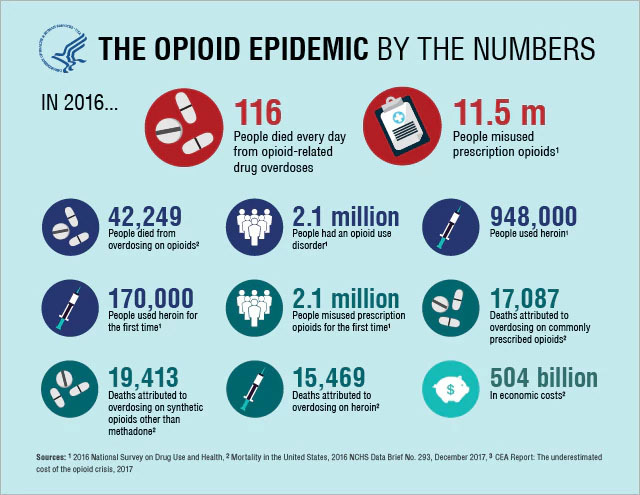AMES, Iowa – The rapid increase of opioid overdose deaths in rural communities across the country has far outpaced the overdose rate in urban areas, and an Iowa State University-led research team wants to know why.
The researchers’ goal is to identify prevention strategies and use big data to predict which communities may be at risk, said David Peters, an associate professor of rural sociology at Iowa State who is leading the five-year project. Andrew Hochstetler, a professor of sociology, and Eric Davis, an assistant professor of computer science, are working with Peters along with researchers from the University of Iowa and Syracuse University. The team received a grant from the U.S. Department of Agriculture to fund the work.
Rural areas hit hardest by the opioid epidemic have often experienced some type of economic shock, Peters said. In many cases, manufacturing plants have closed or farms have consolidated, resulting in a loss of jobs. Peters says such hardship does not automatically put a community at risk for increased opioid use, but there appears to be a connection between how the community responds to economic decline and its risk.
“We think local action plays a role in why some of these communities are more resilient in the face of the opioid crisis and why others are not,” Peters said. “The opioid epidemic seems to be centered in areas where it’s not just economic decline, but there’s a decline in everything – infrastructure, buildings, quality of life. The community is a withering place.”
Learning from communities
There is limited research on the factors driving the opioid epidemic and no evidence-based strategies for how communities can minimize or prevent it, Peters said. Previous research of economically distressed communities shows residents tend to disengage and social networks start to break down. Hochstetler says residents may be less likely to monitor public spaces or work with police to reduce crime.
“With this level of disorganization we see a shift in cultural norms that makes a community less likely to condemn illicit behavior and prevent crime,” Hochstetler said. “If communities are not proactive and that economic shock leads to higher poverty and crime rates, graffiti, trash and abandoned buildings – you’re going to have more social problems.”
Researchers will work directly with those affected by opioids to collect data and identify what has and hasn’t worked in fighting the epidemic. They are developing an advisory panel, which will include law enforcement and court officials, public health experts, city and county leaders and medical professionals, as well as former addicts and family members, to help guide their research, Peters said.
The work will focus specifically on rural areas and micropolitan communities – populations between 10,000 and 50,000 – in different regions of the country. Researchers expect to find differences in rural areas driven by farming, forestry and mining, and want to develop appropriate strategies based on those economic factors.
Predicting risk with big data
A concern for researchers and communities alike is the lag time for data on opioid arrests and deaths, Peters said. The data can help identify potential problems, but the most recent statistics are often two years old. Researchers want to eliminate this barrier by using big data to develop a real-time opioid risk indicator for communities.
“To predict a community’s risk, we must understand the local dynamics, the community’s connectivity to other areas and the risks there,” Davis said. “We don’t yet know how all the indicators for opioids are linked, but we’re going to look at data on people, economic situations, previous risk in the area and potential trafficking patterns. All of this data combined should help form a picture of the local risk.”
The ability to predict is what will set this risk indicator apart from other data sources. If researchers are successful, communities can use the tool to identify the risk and take action before it becomes a larger problem. Researchers will test the tool in 12 communities as part of the five-year project.
Contacts
David Peters, Sociology, dpeters@iastate.edu, 515-294-6303
Andrew Hochstetler, hochstet@iastate.edu, 515-294-2841
Angie Hunt, News Service, amhunt@iastate.edu, 515-294-8986
Quick look
The rapid increase of opioid overdose deaths in rural communities across the country has far outpaced the overdose rate in urban areas, and an Iowa State University-led research team wants to know why. The researchers’ goal is to identify prevention strategies and use big data to predict which communities may be at risk.
Quote
“We think local action plays a role in why some of these communities are more resilient in the face of the opioid crisis and why others are not. The opioid epidemic seems to be centered in areas where it’s not just economic decline, but there’s a decline in everything – infrastructure, buildings, quality of life. The community is a withering place.”
David Peters, associate professor of rural sociology
